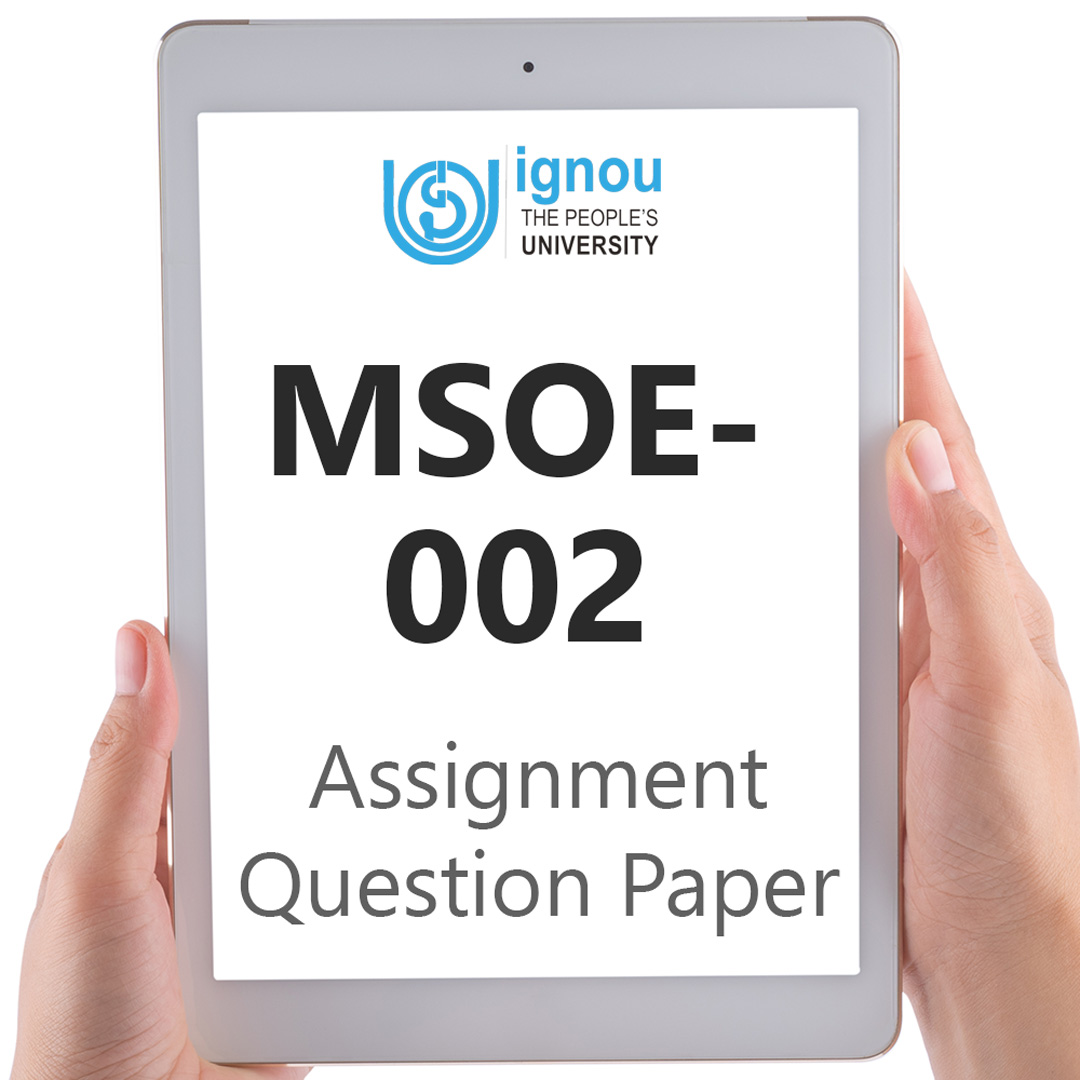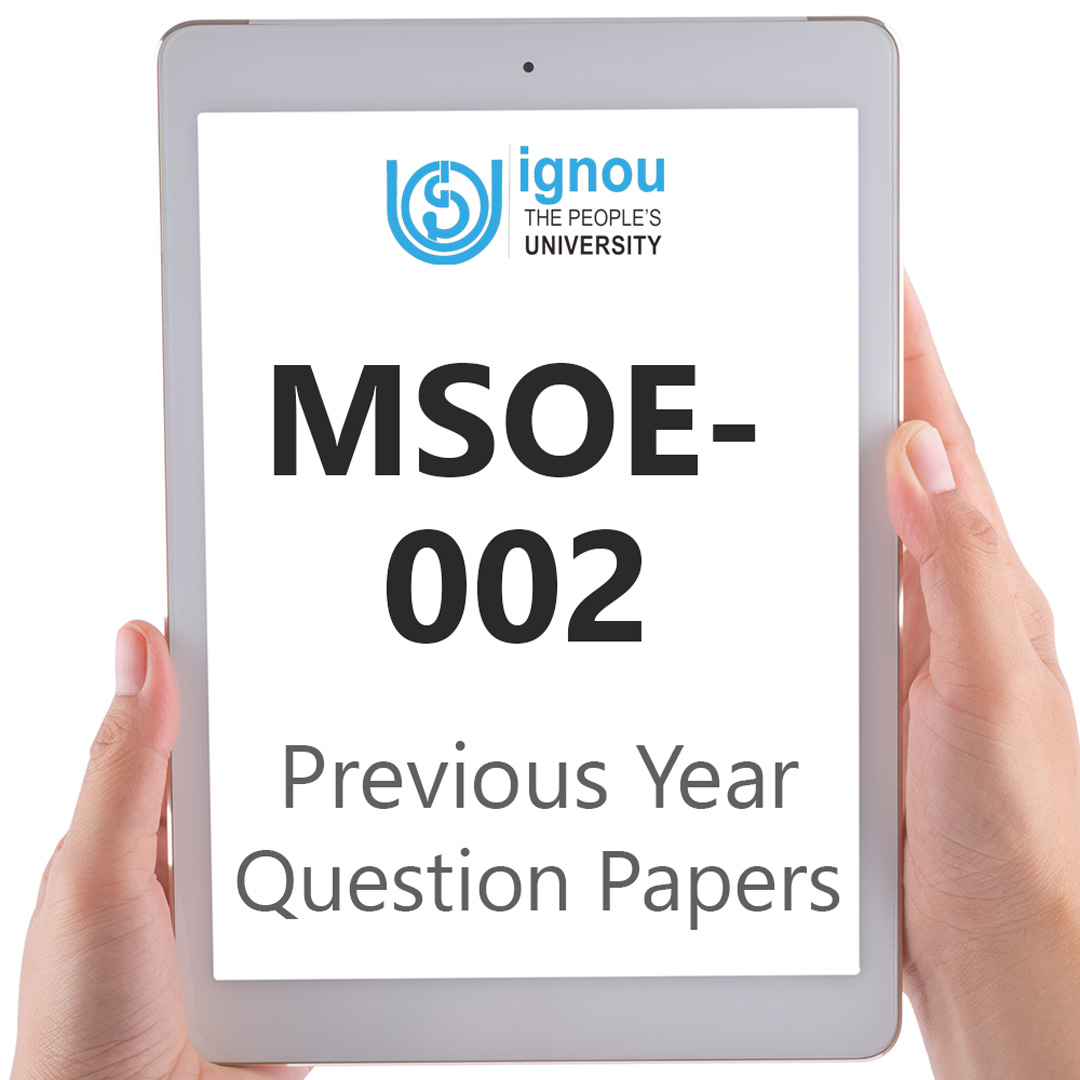If you are looking for MSOE-002 IGNOU Solved Assignment solution for the subject Diaspora and Transnational Communities, you have come to the right place. MSOE-002 solution on this page applies to 2023-24 session students studying in MSO courses of IGNOU.
MSOE-002 Solved Assignment Solution by Gyaniversity
Assignment Code: MSOE-002/AST/TMA/2022-2023
Course Code: MSOE-002
Assignment Name: Diaspora and Transnational Communities
Year: 2022-2023
Verification Status: Verified by Professor
Answer any five questions selecting at least two from each Section. Your answer should be in about 500 words each.
Section- I
Q1) What are the five patterns of Indian emigration?
Ans) Indian emigration has taken various forms, reflecting diverse migration patterns over time. Some key patterns include:
a) Indentured Labor Migration: The migration of Indian labourers to various British colonies as indentured slaves during the 19th and early 20th centuries marked a notable pattern. This migration occurred during the time period. Under the terms of labour contracts, they were recruited to work on plantations in a variety of nations, including Mauritius, Fiji, South Africa, Trinidad & Tobago, and others.
b) Professional Emigration: Another pattern involves persons with high levels of education and professional expertise travelling to a new country in search of better employment opportunities. In search of better career possibilities, skilled workers from India have travelled to nations such as the United States of America, Canada, the United Kingdom, and Australia. These skilled workers include doctors, engineers, and workers in the information technology field.
c) Diaspora Communities: Emigration from India has also resulted in the establishment of major communities of Indians living outside of India all over the world. Despite the fact that they are dispersed throughout locations such as the Gulf countries, Southeast Asia, Africa, and the Caribbean, these communities continue to maintain strong cultural ties to India while also making major contributions to the economics of their adopted countries.
d) Student Migration: Students from India who are pursuing higher education in other countries constitute a significant trend of emigration. As a result of the availability of high-quality education and a wide range of academic programmes, a significant number of students are interested in pursuing their education in nations such as the United States of America, the United Kingdom, Australia, and Canada.
e) Temporary and Circular Migration: In addition, there is a pattern of migration that is either transient or circular, particularly in the context of labour migration to countries in the Gulf countries and Southeast Asia. It is common for Indian workers to temporarily relocate in search of employment and then return to their native country after a brief period of time, which can occasionally result in the migration cycle being repeated.
Q2) Describe the historical context of Indian emigration during colonial times.
Ans) During colonial times, Indian emigration witnessed significant changes due to the policies of the British Empire. Here’s a glimpse of the historical context of Indian emigration during this period:
a) Indentured Labor Migration: One of the most notable aspects of Indian emigration during colonial times was the recruitment of Indian laborers as indentured servants by the British. The abolition of slavery in the 19th century led to a shortage of labor in various British colonies, prompting the recruitment of Indian workers to fill the gap. These workers were taken to colonies like Mauritius, Fiji, Trinidad and Tobago, South Africa, and others under contracts of indenture to work primarily on plantations.
b) British Colonial Policies: The British colonial policies played a pivotal role in shaping Indian emigration. The colonial administration facilitated the migration of Indian laborers to distant colonies to meet the labor demands of the British Empire. The recruitment process, often managed by agents or "sardars," involved deceptive practices, coercion, and promises of a better life, although the living and working conditions of indentured laborers were harsh.
c) Economic Push Factors: The economic conditions in India during the colonial period, including poverty, landlessness, and lack of employment opportunities, were significant push factors driving people to seek work overseas. The exploitative land revenue policies and the impact of agricultural transformations also contributed to the migration of people in search of livelihoods.
d) Impact on Indian Society: The massive emigration of laborers had a profound impact on Indian society. It led to demographic changes in certain regions, with the outflow of laborers affecting family structures and local economies. The remittances sent back by emigrants played a role in improving economic conditions in some regions.
e) Social and Cultural Implications: The migration of indentured laborers led to the formation of Indian diaspora communities in various parts of the world. These communities maintained cultural ties with India while adapting to the local cultures of their adopted countries.
Indian emigration during colonial times was shaped by a complex interplay of economic, social, and political factors, and it left a lasting impact on both the receiving countries and the social fabric of India itself.
Section- II
Q3) Discuss the role of Bollywood in the representation of the Indian diaspora.
Ans) Bollywood, the Hindi film industry based in Mumbai, has played a significant role in shaping the representation of the Indian diaspora on a global scale. The influence of Bollywood extends beyond India's borders, and it has become a powerful cultural force in shaping perceptions of the Indian diaspora. Here are some key aspects of Bollywood's role in representing the Indian diaspora:
a) Global Reach: Bollywood films have achieved widespread popularity in various parts of the world, especially among South Asian diaspora communities. The global success of Bollywood movies has contributed to creating a shared cultural experience among the Indian diaspora, fostering a sense of connection to their roots.
b) Cultural Identity: Bollywood films often explore themes related to cultural identity, belonging, and the diasporic experience. Characters in these films navigate the challenges of straddling two cultures, addressing issues of assimilation, cultural clashes, and the preservation of cultural traditions.
c) Representation of Diversity: Bollywood has made efforts to represent the diversity within the Indian diaspora. Films showcase characters from different linguistic, regional, and religious backgrounds, reflecting the rich tapestry of the diasporic experience. This diversity helps in challenging stereotypes and presenting a more nuanced picture of the diaspora.
d) Nostalgia and Homeland Connection: Many Bollywood films evoke a sense of nostalgia and a longing for the homeland among the diasporas. Themes of love for India, familial ties, and the importance of cultural roots are recurrent in Bollywood narratives, creating a connection for diaspora communities around the world.
e) Diaspora as Protagonists: Bollywood has produced films where the diaspora is not just a backdrop but takes center stage. Stories often revolve around diaspora characters facing challenges and triumphs in their adopted countries, providing a platform for audiences to see themselves represented on screen.
f) Influence on Fashion and Lifestyle: Bollywood's impact goes beyond the cinematic realm, influencing fashion, music, and lifestyle choices of the diaspora. The vibrant and visually appealing aesthetics of Bollywood films contribute to the shaping of a cultural identity that resonates with the diaspora.
g) Transnational Collaboration: Bollywood filmmakers increasingly engage in transnational collaborations, shooting films in international locations and featuring non-resident Indian actors. This not only expands the global appeal of Bollywood but also reflects the transnational nature of the diaspora.
However, it's important to note that the representation of the Indian diaspora in Bollywood is not without criticism. Some argue that Bollywood can perpetuate stereotypes or offer a selective representation of the diaspora experience. Nevertheless, the industry continues to evolve, reflecting the changing dynamics and aspirations of the Indian diaspora worldwide.
Q4) Write a note on the phenomena of “brain drain‟.
Ans) "Brain drain" refers to the emigration of highly skilled and educated individuals from their home country to another country, often due to better opportunities, higher wages, or better living conditions. This migration of talented individuals leads to a loss of intellectual and professional capital in the home country. Here are some key points regarding the phenomenon:
a) Emigration of Skilled Workers: Brain drain primarily affects professionals in fields like medicine, engineering, science, IT, and academia. These individuals seek opportunities abroad that offer better pay, career prospects, research facilities, and living standards.
b) Causes: Various factors contribute to brain drain, including limited job opportunities, political instability, lack of professional growth, inadequate infrastructure, and social issues in the home country. Push factors such as restrictive policies, lack of recognition, and limited resources compel talented individuals to seek better prospects elsewhere.
c) Impact on Home Countries: Brain drain deprives the home country of its best talent and skilled workforce. This loss can affect economic growth, research and development, technological innovation, and the overall quality of services in various sectors.
d) Economic Impact: The departure of highly skilled workers leads to a loss of investments made in their education and training. This can hinder economic growth as these individuals contribute significantly to the intellectual and economic advancement of their home countries.
e) Social and Cultural Impact: Brain drain not only impacts the economy but also affects the social and cultural fabric of the country. The departure of intellectuals and professionals can create a void in knowledge-sharing, educational institutions, and research initiatives, impacting the overall development of society.
f) Potential Benefits for Receiving Countries: While brain drain is detrimental to the home country, it often benefits the destination country by providing a pool of highly skilled and qualified workers who contribute to innovation, economic growth, and diversity.
g) Mitigating Brain Drain: Efforts to reduce brain drain include creating a conducive environment for professionals to thrive, improving job opportunities, offering competitive wages, investing in research and development, and implementing policies that encourage skilled individuals to stay and contribute to their home countries.
Addressing brain drain requires a holistic approach that involves creating an environment that retains talent, providing incentives for skilled individuals to stay, and fostering an atmosphere conducive to growth and development in the home country.
Q5) What do you understand by the term virtual communities.
Ans) Virtual communities refer to groups of people who interact and communicate primarily through digital platforms rather than face-to-face interactions. These communities form online and revolve around shared interests, hobbies, beliefs, or goals. They foster social connections, discussions, and collaborations across geographical boundaries, creating a sense of belonging and shared identity among members. Some defining features of virtual communities include:
a) Online Platforms: These communities exist on various online platforms such as social media networks, forums, chat rooms, blogs, or specialized websites. Members engage through text, multimedia, or virtual reality environments.
b) Shared Interests: Virtual communities are based on shared interests, passions, or objectives. Members join to discuss specific topics, exchange knowledge, seek advice, or collaborate on common goals.
c) Community Participation: Members actively engage by contributing content, participating in discussions, sharing experiences, and supporting each other. Engagement levels can vary, with some members being more active than others.
d) Community Norms: Virtual communities often develop their own norms, rules, and etiquettes governing behaviour, interaction, and content sharing. These norms shape the community's culture and atmosphere.
e) Diversity: Virtual communities can bring together individuals from diverse backgrounds, cultures, and locations, allowing for a wide range of perspectives and experiences.
f) Sense of Belonging: Despite being geographically dispersed, members often feel a sense of belonging and connection to the community due to shared interests and interactions.
g) Support Networks: Many virtual communities provide emotional support, guidance, and advice to members facing challenges or seeking information related to the community's focus.
Examples of virtual communities include forums dedicated to specific hobbies like gaming or crafting, social media groups centered around common interests such as fitness or book clubs, and online support groups for various health conditions or life experiences.
These communities have become an integral part of the online social landscape, offering platforms for people worldwide to connect, exchange ideas, and build relationships outside of physical boundaries.





